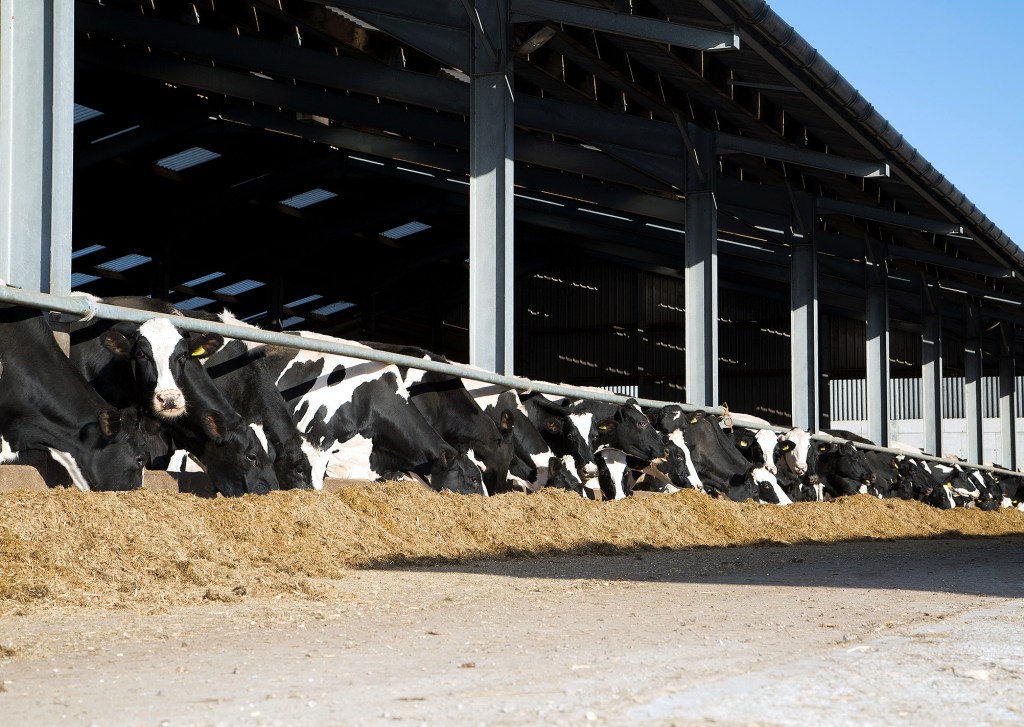January may not feel like the time of year to be thinking about silage success, but now is the perfect time to determine your approach to the job next summer. You may be considering the use of a silage additive to enhance the nutritional value of your feed, or perhaps you are just considering which additive to use.
With many silage additives, much of the focus is on ease at feed-out; others focus more on silage quality, while some try to tick both boxes. You might even decide to let nature take its course next year and hope for the best without the use of an additive.
The last option comes with considerable risk. During over 20 years of working with customers and hundreds of silages, Paul Nunn, Product Manager at Genus ABS, can assure any customers who are considering not using an additive, that well managed, treated silage is invariably better than untreated.
At Genus ABS, we define ‘better’ as silage that retains a higher percentage of the very best quality nutrients that grew in your field, something that can always be achieved with Powerstart® thanks to its unique, fast-acting strain of L. plantarum.
How to reach silage success with Powerstart®
We then encourage customers to sharpen their focus on clamp management, building a clamp that is so compacted air ingress is negligible and aerobic stability is achieved.
One alternative is to use a chemical additive which will undoubtedly reduce the likelihood of losses at feed-out. However, this will do nothing to speed up the initial fermentation process (it might even inhibit it), slowing down the conversion of grass to silage.
This approach leaves you as reliant on the naturally occurring bacteria for fermentation as if you hadn’t treated your silage at all.
You might be fortunate and have good levels of naturally occurring positive bacteria, but you might be unfortunate and have fewer effective bacteria. Both result in a relatively uncertain fermentation duration.
To achieve a good, nutritious silage, you need that fermentation process to take place as quickly as possible. The longer the fermentation takes, the more quality you will lose overall.
A further choice is to use a biological additive which tries to do both things. An additive that drives a fast initial fermentation but also promotes aerobic stability too. While this sounds like a nice compromise, it does come at a cost.
Unfortunately, the initial fermentation is slower, so nutrient values are reduced. The bigger issue is that energy, which could be going to your cows, drives that deliberately promoted ‘secondary fermentation’.
Why focus on a fast fermentation? There are several reasons for silage success, including:
- The resultant silage will be more palatable so intake won’t be limited
- With fewer dry matter losses you’ll have more silage to feed
- Animal performance will be better with better reproduction and production
Palatability
A faster fermentation means palatability will be improved as the better tasting lactic acid will be dominant. If acetic acid is dominant, palatability will be suppressed and there are additives that positively promote the production of acetic acid such as those that include L. buchneri.
We, at Genus ABS, unashamedly aim to help you produce a silage that is so tasty, your cows will choose to eat an extra mouthful.
Reduced losses
The faster fermentation also results in reduced dry matter losses. Trials at Aberystwyth University in 2018 proved that there were almost 4% fewer losses in Powerstart® treated silage when compared to untreated silage.
Gaining that extra feed, which would ordinarily be lost, results in an extra 39 tonnes of silage to feed during the winter if your start point was 1000 tonnes. That could make a large difference if the winter is slightly longer than hoped for.
Animal performance
In terms of animal performance, the benefits are also substantial. Genus ABS proved back in 2010 that herd fertility was better if Powerstart® treated silage was fed to cows, rather than left untreated.
The very fast, efficient fermentation process results in a higher percentage of the essential amino acids (EAAs) remaining available for the cow. Importantly, these include Lysine, the most milk limiting EAA. Because higher levels of EAAs are retained, there are lower levels of ‘broken down’ protein. At its most broken down form, previously useful protein becomes ammonia.
Not only does the presence of ammonia suppress the cows’ inclination to eat more, it also has a negative effect on fertility. Ammonia passed from the rumen into the blood stream causes inflated levels of urea in the blood. Inflated levels of blood urea have a negative effect on fertility as cows cycle less frequently, eggs are of a lower quality and the uterine environment is less accommodating.
By maintaining higher EAA levels, the opposite is true. Cows cycle slightly more often; their eggs are of a better quality and the uterus is more hospitable toward the embryo. The result is that by feeding EAA rich Powerstart® treated silage, cows get in calf, and importantly, stay in calf better.
By using Genus ABS’ silage additive, Powerstart® you’ll retain more of the quality that you grew in the field. Both your cows and your business will benefit, making for great silage success.
Learn more about the silage additive on our website or reach out to your local representative to enquire.






